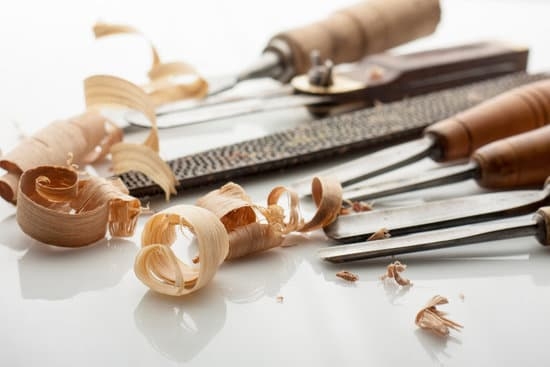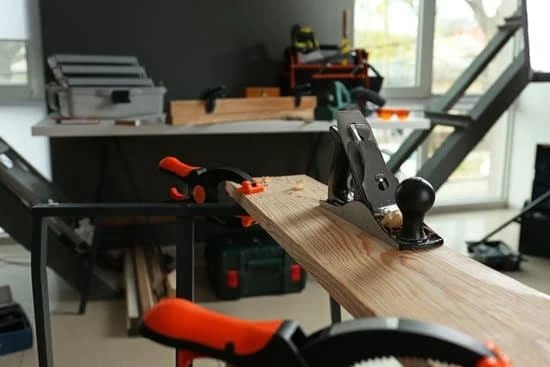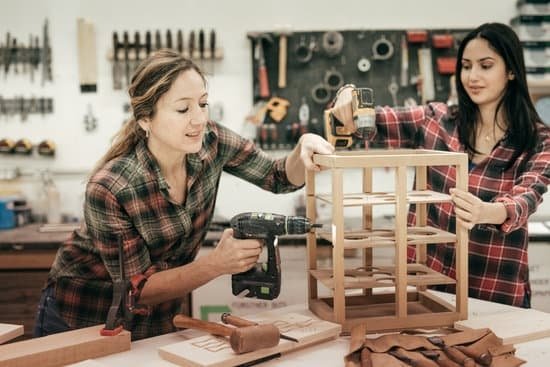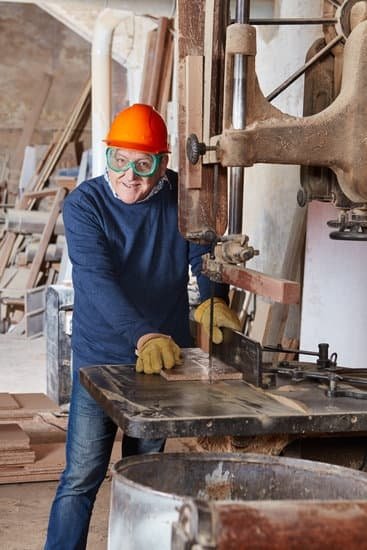Woodworking measuring angles is a fundamental skill that every woodworker must possess to ensure precision and accuracy in their projects. Understanding how to measure angles correctly is essential for creating seamless joints, accurate cuts, and overall professional-looking woodworking pieces. Whether you are a beginner or seasoned woodworker, mastering the art of measuring angles will elevate the quality of your work.
In woodworking, precision is key. Even the slightest miscalculation in angle measurement can lead to misaligned joints, gaps in connections, and overall subpar craftsmanship. Accurate angle measurements are crucial not only for aesthetics but also for ensuring the structural integrity and longevity of your woodworking projects. By mastering the basics of measuring angles, woodworkers can achieve professional-level results and take their craft to the next level.
There are various tools available to assist woodworkers in accurately measuring angles, such as protractors, bevel gauges, and digital angle finders. Each tool has its own advantages and applications depending on the project at hand.
Understanding how to use these tools effectively will enable woodworkers to tackle a wide range of projects with confidence and precision. In the following sections, we will delve into different techniques for measuring angles using a variety of tools, as well as common mistakes to avoid in order to achieve perfect angles in woodworking projects.
Importance of Precision in Woodworking
Precision in woodworking is paramount when it comes to creating high-quality and professional-looking projects. One of the key aspects of precision in woodworking is ensuring accurate angle measurements. Whether you are building furniture, cabinets, or any other wooden structure, getting the angles right can make all the difference in the final outcome of your project. This section will delve into why accurate angle measurements are crucial in woodworking.
Ensuring Proper Fit and Alignment
One of the main reasons why accurate angle measurements are essential in woodworking is to ensure proper fit and alignment of various components. When working on a project that requires angled cuts, such as making a miter joint for picture frames or crown molding for cabinets, even a small error in measurement can result in gaps or misalignments.
By taking precise angle measurements, you can ensure that the pieces fit together seamlessly and create a sturdy and visually appealing finished product.
Enhancing Structural Integrity
Another important reason for accurate angle measurements in woodworking is to enhance the structural integrity of your projects. When pieces are cut at incorrect angles, they may not provide sufficient support or stability to the overall structure. This can lead to weak joints, wobbly furniture, or even structural failure over time. By measuring angles with precision and making accurate cuts, you can create strong and durable wooden structures that will stand the test of time.
Achieving Professional Results
Lastly, accurate angle measurements are crucial in woodworking if you aim to achieve professional results in your projects. Whether you are a hobbyist woodworker or a seasoned professional, having precise angles is essential for creating polished and refined pieces.
It not only enhances the overall aesthetic appeal of your work but also showcases your skill and attention to detail. By mastering the art of woodworking measuring angles, you can elevate your craft and produce exceptional pieces that garner admiration and praise from others.
Different Tools for Measuring Angles
Woodworking measuring angles is a critical aspect of any woodworking project, as accuracy in angle measurements can make or break the final outcome. To achieve precise and consistent results, woodworkers rely on a variety of tools specifically designed for measuring angles. Among the most common tools are protractors, bevel gauges, and combination squares.
Protractors are versatile tools that allow woodworkers to measure and mark any angle accurately. They typically consist of a semicircular plastic or metal device with degree markings along the curved edge. Bevel gauges, on the other hand, are adjustable tools that can be set to replicate an existing angle or transfer an angle from one piece to another. These tools are essential for ensuring consistency in angled cuts across multiple pieces of wood.
In addition to protractors and bevel gauges, woodworkers may also use combination squares for measuring angles. These handy tools combine a ruler, a square, and a protractor in one compact device, making them ideal for both linear measurements and angle calculations. By utilizing these different tools for measuring angles effectively, woodworkers can enhance the precision and quality of their woodworking projects.
| Tool | Description |
|---|---|
| Protractor | A semicircular tool with degree markings used to measure and mark angles accurately. |
| Bevel Gauge | An adjustable tool for replicating existing angles or transferring angles between pieces of wood. |
| Combination Square | A versatile tool that combines a ruler, square, and protractor for precise linear measurements and angle calculations. |
Techniques for Measuring Angles
Measuring angles accurately is essential in woodworking to ensure that pieces fit together seamlessly and projects turn out as intended. Whether you are a beginner or an experienced woodworker, having the right tools and techniques for measuring angles can make a significant difference in the quality of your work. In this section, we will discuss how to measure angles using a miter saw, table saw, and hand tools.
When it comes to measuring angles in woodworking, one of the most commonly used tools is a miter saw. This versatile tool allows you to make precise angled cuts quickly and efficiently. To measure angles with a miter saw, start by adjusting the bevel angle on the saw to match the desired angle for your cut.
Use a protractor or bevel gauge to confirm the accuracy of the angle before making your cut. Make sure to secure the workpiece firmly in place before cutting to prevent any movement that could affect the angle.
In addition to a miter saw, table saws can also be used for measuring angles in woodworking projects. Table saws are especially useful for making rip cuts at specific angles.
To measure angles with a table saw, use a miter gauge or sled that can be adjusted to the desired angle for precise cuts. It is important to double-check your measurements before making any cuts with a table saw to avoid errors that could result in wasted material or inaccuracies in your project.
Common Mistakes in Measuring Angles and How to Avoid Them
Measuring angles accurately is crucial in woodworking to ensure precision and the proper fit of your wood pieces. However, there are common mistakes that can occur when measuring angles that can lead to errors in your projects. By understanding these mistakes and learning how to avoid them, you can improve the quality of your woodworking projects.
Here are some common mistakes in measuring angles and tips on how to prevent them:
1. Incorrect tool placement: Placing your measuring tools incorrectly can lead to inaccurate angle measurements. Make sure that the base of your protractor or bevel gauge is flush against the edge of the piece you are measuring to get an accurate reading.
2. Not accounting for tool thickness: When using tools like a miter saw or table saw to cut angles, it’s important to remember that the blade has thickness. Failing to account for this thickness can result in angles that are slightly off. To avoid this mistake, make test cuts on scrap wood before cutting into your final piece.
3. Ignoring parallax error: Parallax error occurs when the eye is not directly in line with the measurement being taken, leading to inaccuracies in readings. To avoid this mistake, position yourself directly over the measurement line and ensure that your eye is at a 90-degree angle to the ruler or scale.
By being aware of these common mistakes and taking steps to avoid them, you can improve the accuracy of your woodworking projects when measuring angles. Remember that practice makes perfect, so continue honing your skills in woodworking measuring angles for better results in your future projects.
Tips and Tricks for Achieving Perfect Angles in Woodworking Projects
Woodworking projects often require precise angle measurements to ensure that the pieces fit together seamlessly and create a professional-looking final product. One useful tip for achieving perfect angles in woodworking projects is to use a digital angle gauge. These tools provide accurate measurements and are especially helpful for more complex angles that may be challenging to measure manually. Additionally, taking the time to calibrate your tools regularly can also improve the accuracy of your angle measurements.
Another important trick to keep in mind when working on woodworking projects is to always measure twice and cut once. This age-old advice may seem simple, but it can make a significant difference in the outcome of your project.
Double-checking your measurements before making any cuts can help prevent costly mistakes and ensure that your angles are precise. Additionally, using a sharp pencil with a fine point can help you mark your measurements more accurately, resulting in cleaner cuts and better-fitting joints.
Furthermore, when working on projects that require multiple angle cuts, consider creating a practice piece from scrap wood before cutting into your actual material. This allows you to test your angles and make any necessary adjustments before committing to the final piece. Practicing your cuts beforehand can help you gain confidence in your measurements and techniques, ultimately leading to better results in your woodworking projects.
| Woodworking Tip | Description |
|---|---|
| Use Digital Angle Gauge | Provides accurate measurements for precise angles. |
| Measure Twice, Cut Once | Double-checking measurements before cutting helps avoid mistakes. |
| Create Practice Pieces | Test angle cuts on scrap wood before cutting actual material. |
Advanced Angle Measuring Techniques for Complex Projects
Using Digital Angle Gauges
For more complex woodworking projects that require precise and accurate angle measurements, consider using digital angle gauges. These tools provide a digital readout of the exact angle, allowing for greater precision compared to traditional manual measuring tools. Digital angle gauges are especially useful when working on intricate or detailed projects where even a small margin of error can have significant consequences.
Using Angle Blocks
Angle blocks are another advanced tool that can help woodworkers achieve perfect angles in their projects. These blocks are preset to specific angles, making it easy to replicate the same angle multiple times. By using angle blocks in conjunction with other measuring tools like protractors or bevel gauges, woodworkers can ensure consistent and accurate angles throughout their project.
Calibrating Tools Regularly
To maintain accuracy when measuring angles in woodworking projects, it is crucial to calibrate your measuring tools regularly. Over time, tools like protractors or miter saws may become slightly misaligned, leading to inaccuracies in your measurements. By taking the time to calibrate your tools before starting a new project, you can trust that your angle measurements will be as precise as possible.
Practical Examples
Woodworking projects often require precise measurements and accurate angles to ensure that pieces fit together perfectly. In this practical example section, we will provide a step-by-step guide on how to measure and cut angles in a DIY woodworking project. One of the key tools you will need for this task is a combination square, which can help you accurately measure and mark angles on your wood pieces.
To begin, select the wood pieces you will be working with and identify the angles that need to be cut. Use a pencil to mark the angle measurements on the wood, ensuring that they are clear and visible. Next, use a combination square to align the measuring blade with the edge of the wood and adjust it to your desired angle. Lock the combination square in place to maintain the angle measurement while cutting.
When using a miter saw or table saw to cut your wood at an angle, make sure to double-check your measurements before making any cuts. Always wear appropriate safety gear such as goggles and ear protection when operating power tools. Remember that practice makes perfect when it comes to woodworking measuring angles, so don’t get discouraged if your first few attempts are not seamless.
By following these step-by-step instructions and taking your time with each cut, you can achieve precise angles in your DIY woodworking projects. Remember that accuracy is key in woodworking measuring angles, so always double-check your measurements before making any cuts. With practice and patience, you can master the art of measuring and cutting angles in woodworking projects for professional-looking results.
Conclusion
In conclusion, mastering angle measurement skills in woodworking is crucial for achieving precise and accurate results in your projects. Whether you are a beginner or an experienced woodworker, understanding the basics of measuring angles and using the appropriate tools can make a significant difference in the quality of your finished pieces.
The importance of precision in woodworking cannot be overstated, as even the slightest miscalculation in angle measurements can lead to misaligned joints, gaps in corners, or overall structural instability. By taking the time to learn different techniques for measuring angles and avoiding common mistakes, you can ensure that your woodworking projects not only look professional but also stand the test of time.
Moreover, by continually practicing and honing your woodworking measuring angles skills, you can tackle more advanced projects with confidence. From intricate furniture pieces to complex cabinetry, having a solid foundation in angle measurements will allow you to take on challenging designs and create truly masterful works of craftsmanship. So, remember to pay attention to detail, use the right tools, and practice regularly to enhance your woodworking skills and elevate the quality of your creations.
Frequently Asked Questions
How Do You Measure Angles in Woodworking?
In woodworking, angles are typically measured using a tool called a protractor or an angle finder. These tools allow woodworkers to accurately measure and mark angles on the wood they are working with. Precise angle measurements are crucial for ensuring properly fitting joints and precise cuts.
What Tool Do Carpenters Use to Measure Angles?
Carpenters commonly use a tool called a combination square to measure angles accurately. This versatile tool not only measures angles but also works as a square and a ruler. With its adjustable blade, carpenters can easily set specific angles for various woodworking tasks, such as cutting miters or marking out joinery.
What Is the Rule for Measuring Angles?
The rule for measuring angles involves understanding that there are 360 degrees in a full circle. When measuring angles, carpenters use the degree scale on their measuring tools to determine the exact angle of inclination between two intersecting lines. This rule allows for accurate and consistent measurements when working on woodworking projects that require precise angles.

Hi everyone! I’m a woodworker and blogger, and this is my woodworking blog. In my blog, I share tips and tricks for woodworkers of all skill levels, as well as project ideas that you can try yourself.





